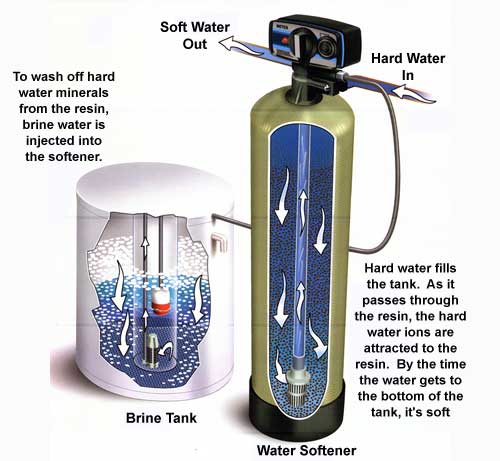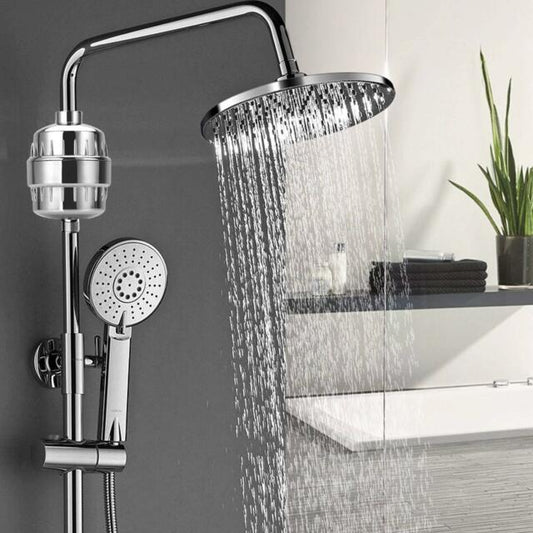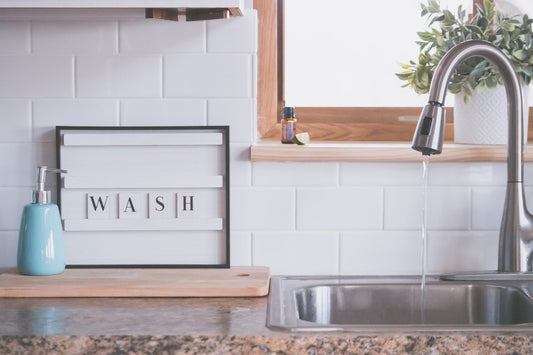Ion exchange water softener treatment that essentially replaces healthy, spring-like water with water that’s full of sodium, infecting the environment with unnecessary waste in the process. Simply put, there are alternatives on the market that are better for the environment -- and for your health.
What’s more: they even end up costing less than ion-exchange water softeners in the long run.
Now, that isn’t to say there are zero good uses for ion-exchange water softeners. We’ll include some reasonable applications for ion exchange water softeners in this article, too.
The truth is, though, for the vast majority of domestic and residential applications, ion exchange is simply outdated.
In order to understand why, you need a rudimentary understanding of various water softening processes.
Water softeners are not filters in any regard. Calcium and magnesium are essential nutrients that are naturally occurring minerals and are not unhealthy contaminants like lead or disinfectant by-products. So really water softeners turn unfiltered dirty hard tap water into unhealthy dirty tap water full of sodium!
So really ion exchange is a water softener and not considered a filter. It is, however, an exchange between ions.

How Does Ion Exchange Work?
Ion exchange -- what your typical salt-based water softener is built to do -- is actually really simple.
Hard water is water that’s full of magnesium and calcium. These are healthy, naturally-occurring minerals that, unfortunately, can cause a whole mess of problems in your homes:
-
Inability for soap to lather (hence the name “hard water,” it’s “hard to lather soap” -- not physically hard).
-
Dry skin.
-
Dry hair.
-
White spots on dishes and silverware.
-
Limescale build-up that shortens appliances’ lifespans and builds up in pipes.
Ion exchange gets rid of magnesium and calcium by binding to a resin, a small, negatively-charged sand-like bead. After the magnesium and calcium binds with all of the available resin, you don’t need to go out and buy more resin. Instead, ion exchange water softeners regenerate the resin by flushing it with a brine (salt) solution. Even though the bind between the magnesium and calcium and the resin is stronger than the bind between the sodium and the resin, since there’s such a long contact time and so much salt used, the magnesium and calcium eventually flows off into a discharge tube.
The result is about 300mg of sodium per day if you drink two gallons of water on average (and if your hard water has an average hardness of 10 grains per gallon). For some people, people who don’t have to worry about high blood pressure or coronary artery disease, this isn’t a major issue. For others, this amount of sodium can seriously damage their health.
What is Water Softener Resin? (Ion-Exchange Resin?)
Water softener resin, or ion-exchange resin, as we mentioned before, is a yellowish or white bead that binds with sodium and magnesium and calcium at its active sites, where it’s negatively charged.
In order to regenerate resin, a high concentration of salt solution must be washed through the beads. This salt solution is then dumped into your main water line -- and the hard water is dumped into a discharge line.
Is Ion Exchange Water Treatment Right for Me?
We tend to take a pretty hard stance against ion exchange. When you sell salt-free water conditioners, it just makes sense.
But are there any scenarios in which it makes perfect sense to buy an ion exchange water softener?
Sure! But most of them are non-residential (i.e. they aren’t supplying anyone with drinking water). For example, let’s say you run a greenhouse, or some sort of community garden. According to the University of Arizona, salty water is actually good for lawns in small amounts, and it’s actually extremely manageable in larger amounts as long as you follow these instructions: “Twice a year apply agricultural-grade gypsum to the lawn at the rate of 2.5 lbs per 100 square feet (10 x 10 feet) area of the lawn.”
Also, you might desire an ion exchange water softener if you have hard water problems in excess of 35 grains per gallon. This is particularly important if you need softened water in some sort of commercial facility. If you suffer from extremely hard water problems, ion exchange can work really well.
However, we recommend getting a second filter for your drinking water so that you’re not consuming large amounts of sodium.
What Alternatives Exist for Whole House Water Treatment?
Sometimes science presents a better solution for existing processes, and it benefits everyone.
In the case of water softeners, Arizona State University found that template assisted crystallization performs just as well -- if not better -- than ion exchange and electromagnetic systems.
Template assisted crystallization uses activated carbon to influence the nucleation sites of magnesium and calcium to make them less likely to adhere to surfaces. That means you essentially can get rid of hard water without getting rid of the magnesium and calcium. A lot of Americans regularly supplement their diets with magnesium and calcium; they’re healthy, spring-like minerals that promote higher bone density.
The result is a water softening (and/or conditioning, depending on how strict you are with semantics) system that doesn’t require a discharge line, doesn’t require an electrical source for regeneration, and doesn’t require a biweekly salt refill (or resin refill). No discharge line means it’s better for the environment. No electrical source means it’s easier to install. And no biweekly salt refill means it’s better for your wallet.
Cheaper installation. Easier maintenance. Just as effective (if not more).
Read More>> Salt vs salt free water softeners
Conclusion: The Truth About Ion-Exchange Water Treatment
So, now that you know how ion exchange works, you should also understand all of the extras that ion exchange requires: a discharge line (to rinse the magnesium and calcium off the resin beads), an electrical source (to power the regeneration process), and regular refills of brine solution (to make sure the water softener is still functional).
All in all, it requires a level of maintenance, attention, and cost that is simply unnecessary and is certainly not a purification system.
However, we will amend that, if you live in an area that’s severely affected by hard water and/or run a commercial facility where no one is regularly drinking the tap, it might help to buy an ion-exchange softener.
In most other cases, though, template assisted crystallization achieves the same aims as ion exchange. If you want to check out some template assisted crystallization softeners, look at our store. Our systems are NSF certified for safety and efficacy.






